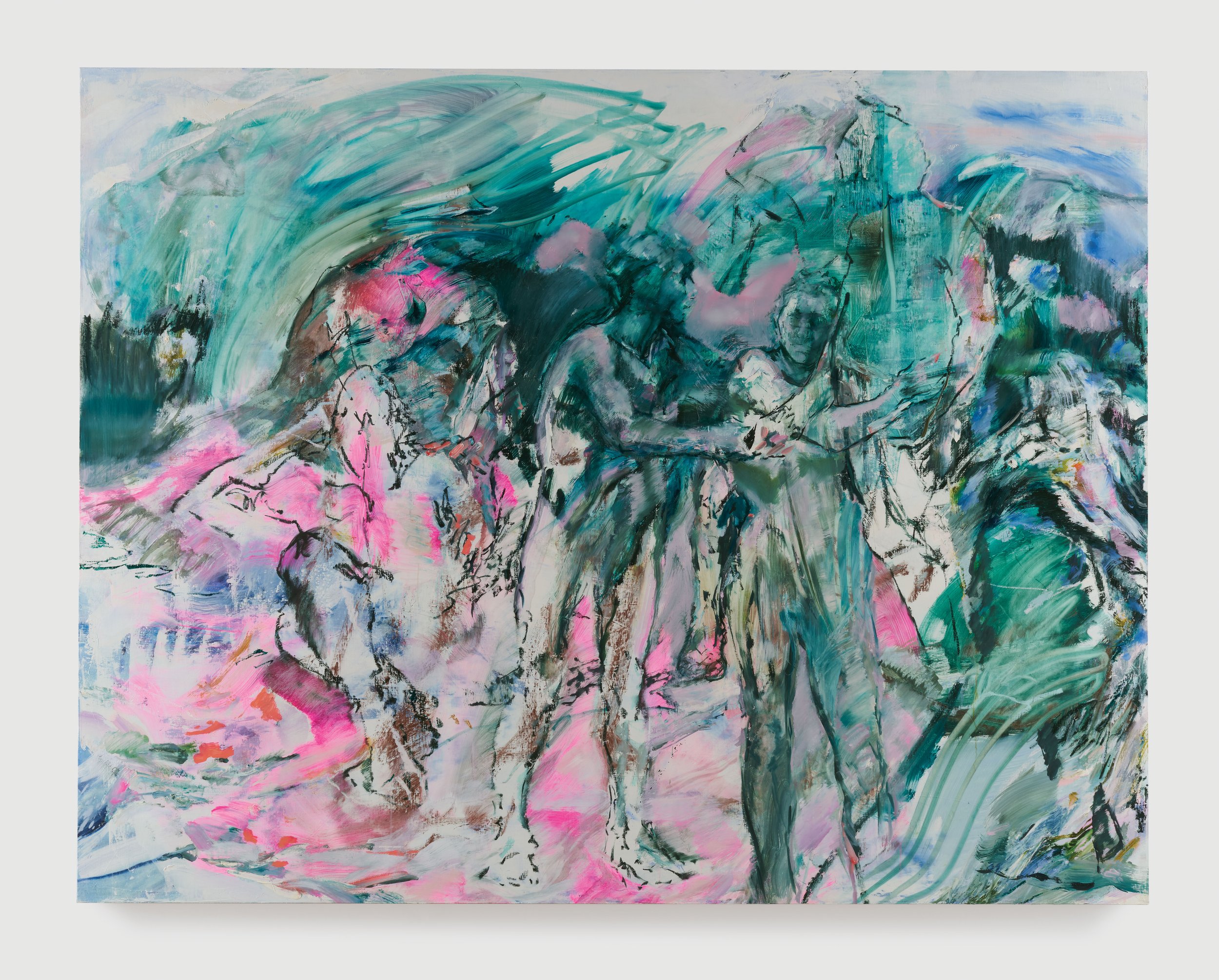Kylie Manning | That Great Expanse, That Beacon for the Spirit
by Helena Haimes
Kylie Manning. “Sapling” (2022). Oil on Linen. 64” X 82”. © Kylie Manning, Courtesy Pace Gallery.
Kylie Manning. “Moonglow” (2022). Oil On Linen. 74 1⁄8” X 96 1⁄8”. © Kylie Manning, Courtesy Pace Gallery.
Have you ever tried to mentally recall photographs from your childhood? Personally, I keep one, enormous leather-bound album on a shelf too high to reach without effort, meaning that the printed photos themselves—of a three-year-old me picking my nose in a paddling pool, my dad’s blurry snapshots of us all on sunny French beaches, or my mother and I deep in conversation on a boat tour of the Thames—remain largely out of reach and live mainly in my mind’s eye. As much as I always like to believe I remember these fixed images (let alone the highly subjective memories they evoke) accurately, I never do. As historians, police officers, and philosophers can tell you: there’s no such thing as accuracy when it comes to the process of remembering—human memory and recall is a messy business.
These were my first thoughts upon gazing at Kylie Manning’s ethereal and deceptively complex paintings. The Brooklyn-based artist, whose exhibition at Pace LA, her first with the gallery, opens mid-September through October, regularly uses old family photographs as starting points to create her intensely atmospheric paintings that gently but confidently beckon us to forge our own connections with them. Combining scrupulously applied layers, bold hues and rapid brushstrokes, Manning’s canvases bury sourced images deep within themselves. Old family photographs are fluently absorbed into her painting practice, without being either completely rejected or overly obscured. Her work unabashedly embraces the ongoing clash between painting and photography that has so defined the history of modern painting. “Remembering the many childhood photographs I’ve viewed of Kylie and her siblings on the beach, or sandwiched into the van used to travel throughout Mexico, I find her paintings frequently act as fossilized memories,” Christiana Ine-Kimba Boyle, a curator at Pace who’s worked extensively with Manning, tells me.
Manning certainly had what you might call an unconventional upbringing. Born in Juneau, Alaska to art teacher parents, she and her siblings moved between her birthplace and various locations in Mexico for much of her childhood. The impact of growing up surrounded by the majestic capriciousness of the Alaskan landscapes and the light-soaked intensity of rural Mexico has clearly stuck with her, bleeding into her painting practice both visually and conceptually. “Her paintings heavily rely on light as a means of activating the canvas, given so much of her work is strongly based on archiving the memory of a place as much as it is about archiving the image of friends, family, or even strangers,” says Ine-Kimba Boyle. “Depending on the temperature of light, whether it be cool morning light or a warm evening sunset, you see Kylie’s paintings transform and almost weather as time passes within the present moment.”
For Joni Mitchell fans, the show’s title offers more insight into these technically accomplished and aesthetically rich paintings. “Both Sides Now”—the classic, emotionally hefty Mitchell song about passing time and the fallibility of memory—looms large over all the works on display. “I grew up listening to Joni Mitchell and have vivid memories of that song as a child,” Manning tells me. “The song is about perspective and temporality, and how you think you know something—but it’s actually just your projection; it’s an extraordinary concept that speaks to the core of my practice. The humility and self-reflection in the song is crucial: to realize it’s merely clouds/love’s/life’s illusions that we recall, and that we really don’t know them at all. The paintings remain open and resist easy interpretation so that the viewer can project their opinion and heart into a piece—hopefully it meets them halfway. Down the road they may view the work differently, and later may even realize it created space for their projections as well, while being something entirely different all along.”
Kylie Manning. “It’s Oh So Quiet” (2022). Oil On Linen. 30” X 25”. © Kylie Manning, Courtesy Pace Gallery.
Manning’s technical prowess—her skillful layering and use of color—is crucial to these paintings’ extraordinarily visceral impact. She spends a lot of time carefully priming each canvas with oil ground before sanding each layer, building a personal relationship to the painting before she even picks up a brush. “It’s very clear to the viewer what’s happening layer wise, but also that all of the colors refract from a white just immediately below one layer of safflower oil,” she says. “The result is that they feel shockingly thin in person, I think, but they’re also filled up with tons and tons of souls of previous paintings being sanded down and whited out underneath.”
Manning’s bold, often garish use of color short circuits any attempt at easy viewing or straightforward interpretation. In Dog Days (2021), for example, swathes of hot pink and brash orange offer a brazenly contemporary counterpoint to strokes of Courbet green, all punctuated with Manning’s distinctive genderless bodies and not quite obliterated faces. These are paintings that constantly ride the line between tranquility and turbulence, softness and aggression, stereotypical ideas of masculinity and femininity, historical weight and contemporary punch; all intentional and highly considered ambivalences which Manning fully embraces. She is constantly seeking ways to make work that pays respectful homage to art history—including the pure pigments made from natural dyes employed in the Indigenous visual culture of her native Alaska—while also sitting firmly in the here and now.
“I ask how I can make a color that feels both aggressive and like a whisper or chemical, and yet a color that’s been used for thousands of years,” Manning explains. “So tying into a history of a Courbet green, or a Dianthus pink, and every single painter that had used those, all the way back to the pure pigments… having a color that has been around since the earliest marks, as well as a color that only came about thirty years ago on the same piece, feeling how loud they are, how new they are, how old they are. So the piece can feel very old and also something that should be about a thousand years from now at the same time.”
For Ine-Kimba Boyle, Manning’s “controlled and intentional” palette also serves to evoke specific places at particular moments. “The mossy greens, purples, and blues remind me of the evergreen forest in Alaska or humid jungles in Sayulita, while the fiery pinks and yellows are reminiscent of a picturesque sunset or the northern lights in an Alaskan summer night sky,” she says. Manning is also keen on using color to subvert entrenched notions of masculinity and femininity: “Pink still has a connotation that we consider feminine,” she tells me. “You can make a piece that feels like a real dick swinging painting with the colors that we associate with femininity, which we in turn often associate with something softer, and incidentally weaker.”
Absurd as it might seem in 2022, the monumental scale of Manning’s paintings has also apparently been widely misinterpreted as a feminist statement. You might ask, as I did, why it is that women still can’t make large paintings without being labeled as responding to a Pollock-era idea of ‘maleness.’ In Manning’s case, it was the vastness of the Alaskan and Mexican vistas of her childhood that led her to work on such an enormous scale, rather than any calculated desire to make work that encroached on traditionally male terrain. “A lot of people thought that it was a feminist decision to make large work, to flip masculinity on its head to make these masterpiece-scale paintings,” she says. “But that was never actually the agenda. It’s because I grew up in these massive landscapes, so it was just a very organic decision that sprung from growing up in Alaska.”
This is not to say that Manning’s practice is not progressively feminist, just that her expression of that feminism is far more original than simply making big paintings. The bodies that sprawl, stand, and drape over each other are decidedly genderless—a conscious choice that lifts the work into boldly political territory. “The most progressive element of Kylie’s practice is her omission of gender from her rendered figures,” Ine-Kimba Boyle explains. “Bodies are so frequently politicized, both in real life and in art, especially those perceived or categorized as female. The removal of gender within her work acts as a political statement in itself, though serving a dual purpose, as the viewer is not only forced to focus on Kylie’s technical prowess as a painter, but also question their own beliefs and politics around gender.”
One of the most striking facets of Manning’s practice that emerges repeatedly throughout our conversation is its remarkable generosity. The more we chat, the more I realize she is the polar opposite of the arrogant contemporary painter, content to make elitist paintings that revel in their own inaccessibility. This is clearly an artist who wants every viewer to connect with her paintings in their own way, and she actively considers how she can facilitate such an experience. She concludes, “I had a professor who once said: you want your work to meet people visually first, cerebrally second and bodily third. So I hope to immediately draw people in straight off the bat with the conversation about color. And then, to move beyond what might appear simple at first glance, to perhaps meet them contextually and conceptually. Then, finally, to enable a bodily connection; for people to feel a wisdom there and to have a very direct, personal conversation with the work. I try to never sketch or pre-plan anything so that it’s all unraveled with the viewer.”
Kylie Manning. “The Places We Once Called Home” (2022). Oil On Linen. 72” X 96”. © Kylie Manning, Courtesy Pace Gallery.
Kylie Manning
Written by Helena Haimes




